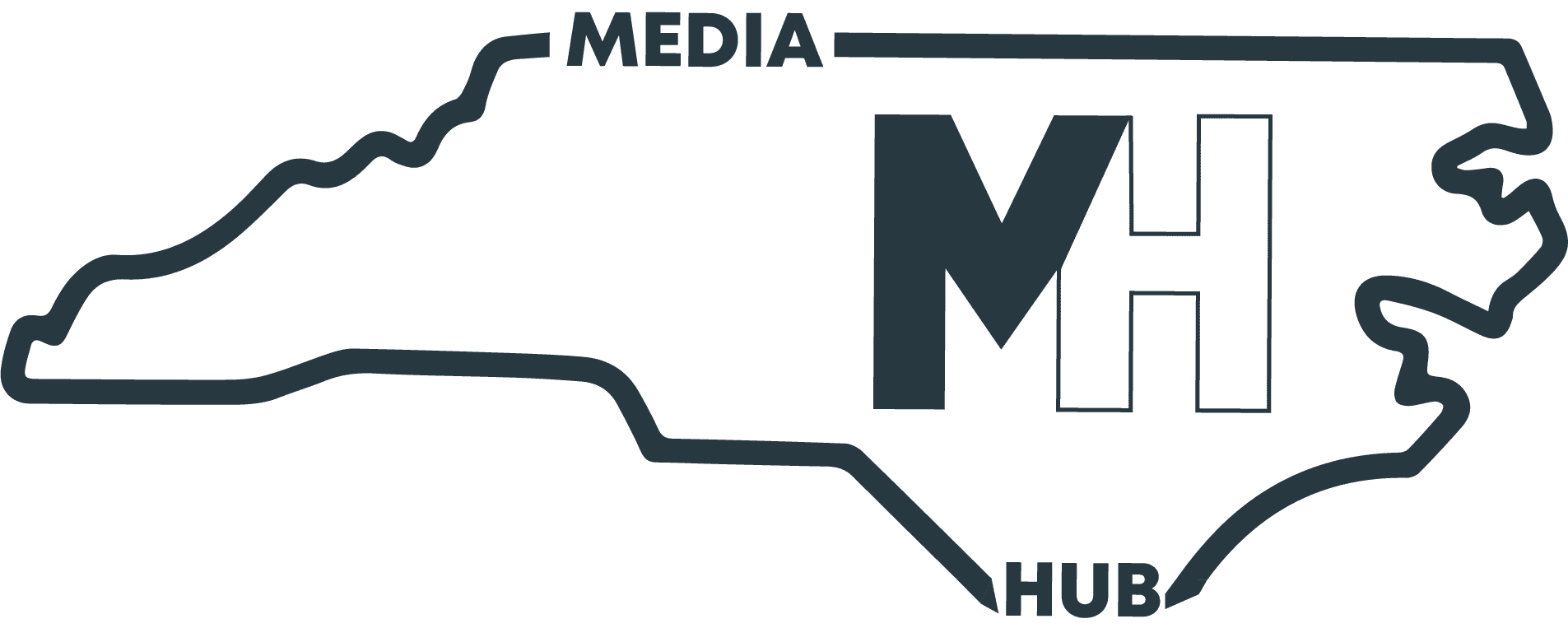Story by Eliza Benbow
Cover Photo by Danielle Hart
RALEIGH, N.C. — Tyler Jones’ hands are smudged with residue from the oil pastels he is using to create a portrait. He’s not in his usual space, though–he’s in the lobby of the City of Raleigh Museum, pausing his work to talk to curious passersby as they filter into the building and pass his table at the museum’s first ever Black Artists Day.
The portrait is of Anna Julia Cooper, who was born into bondage in Raleigh and became an educator and writer who advocated for equal education for women–particularly Black women.
This isn’t the first time that Jones, a recent UNC Greensboro graduate, has used art to bring Black history to present-day audiences.
His art is about history, politics and socioeconomics, and it often provides positive portrayals of Black culture and Afrocentrism. Jones said he hopes that the positive, true representation of historical figures through his art preserves their stories for future generations.
“I find it my responsibility as a Black artist to do research and really look at what has been accredited by universities and what is really of truth, what is of the world we live in,” he said. “And my perspective on that then turns those facts into a picture, into something for someone to embrace and indulge in.”
The aesthetics of art can get a foot in the door for discussions about topics that may otherwise get initially stopped by biases, Jones said. For him, that means intentionally depicting subjects from various backgrounds, including the LGBTQ+ community and people from a range of socioeconomic backgrounds.
Jones was one of six artists from the Triangle area who participated in Black Artists Day, which was co-hosted with the Pope House Museum. The event consisted of a panel moderated by Paul Baker, the director of Raleigh’s Contemporary Art Museum, and displays of artwork from the participating artists before and after.
Among the artists featured at the event were muralist Lord Phly, photographer Samantha Everette, painter and sculptor Pinkie Strother, painter and public artist JP Jermaine Powell and painter Drew Jones.
During the event, artists and attendees were surrounded by history.
The hardwood floors of the 150-year-old building creaked underfoot as nearly 200 attendees browsed the artists’ work before the panel. Later, about 50 of them almost completely filled the rows of seats set out by museum staff in the “Hello, We Are Raleigh” exhibit space to listen to the artists speak.
Event co-organizer Hazel Boomer, operations manager of the Pope House, said she wanted to highlight the range of art and artists that Raleigh has to offer.
“I also wanted to give these people their flowers and show that their art is important, that it is moving and it deserves recognition,” she said.
Art is a universal language, Boomer said, that can go beyond traditional academic spaces and reach out to a wider community, particularly with art by Black artists about Black history.
CoR Museum is working to be a community space as well as a museum, she said, and events like this engage the community in a new way.
Like Tyler Jones, Strother creates artwork depicting moments in Black history, often through dioramas with sculpted figures.
She said that the stories she tells through her artwork bring her closer to American history, which she described as a quilt or netting.
“When you realize what has happened before, the dynamics of things that people have done, then you have a greater appreciation for it,” Strother said. “And when you appreciate things, you go back and you keep it.”
In the panel, Everette said that most of her work pulls from her experiences as a Black woman. She recently exhibited a collection of photographs celebrating the ritual of hair braiding for Black women, titled “Crowning Glory.”
She said she hopes viewers of her photography see themselves represented in a beautiful light and that all viewers, regardless of race, can form a connection to the work.
For Powell, it’s important to represent and appreciate an array of experiences of Black life through authentic art.
“It’s authenticity, not only to me as an artist but also the subjects that I paint,” he said. “I have a responsibility to paint them with dignity, respect, beauty.”
Powell, who has a solo exhibition in the North Carolina Museum of Art through the beginning of March, creates brightly colored portraits and has painted murals that can be found around Raleigh. His work focuses on predominantly Black neighborhoods within the United States and has recently begun to include neighborhoods in South Africa.
Outreach to community members, particularly through public art, is also central to the artwork of Lord Phly, who works with distinct messages.
“My village is who I meet, who I’m able to inspire, who I’m able to motivate, who inspires and motivates me,” he said in the panel.
Along with providing representation, art can inspire connections between viewers and artists. Drew Jones uses his art as a tool to encourage vulnerability among his viewers, including self-discovery and discussions about uncomfortable, taboo subjects.
He said that his identity and culture is permeated in his work, even if he doesn’t feel the need to directly speak on it through his art.
“Every aspect of who I am is influenced by Black culture, so that in turn automatically translates it into my art,” he said during the panel.
One attendee, artist and teacher Scott Renk, sketched the panel as it happened. He was joined by his partner, Erika Kendrick, who said she wanted to attend the panel to meet local artists and hear about their first breaks and inspirations.
There are a lot of struggles that come with being an artist, she said, and the panel inspired and empowered her as a Black sculpture artist herself.
As Lord Phly said during the panel, it’s important to not only celebrate the past, but also the present and future.
“I’m working to be Black history,” he said.
